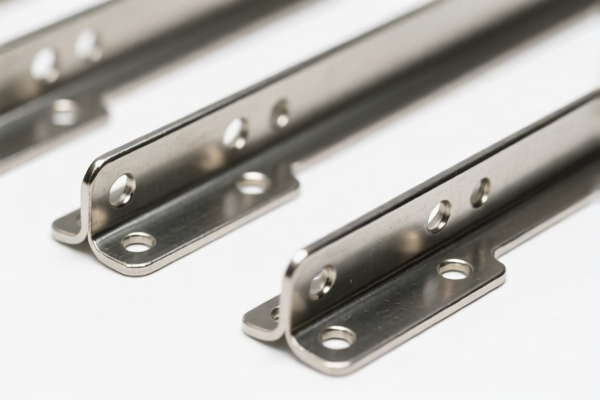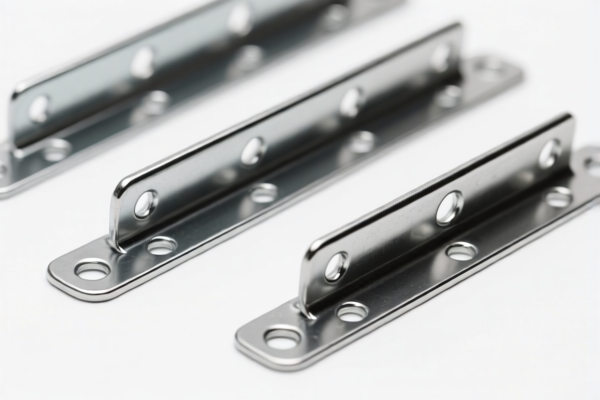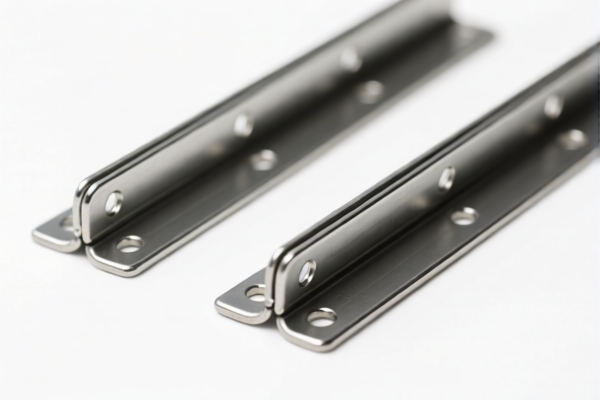| HS Code | Official Doc | Tariff Rate | Origin | Destination | Effective Date |
|---|---|---|---|---|---|
| 8505110090 | Doc | 32.1% | CN | US | 2025-05-12 |
| 8505193000 | Doc | 59.9% | CN | US | 2025-05-12 |
| 8548000000 | Doc | 55.0% | CN | US | 2025-05-12 |
| 7326908688 | Doc | 82.9% | CN | US | 2025-05-12 |
| 7326901000 | Doc | 80.0% | CN | US | 2025-05-12 |
| 7325995000 | Doc | 82.9% | CN | US | 2025-05-12 |
| 7325100080 | Doc | 55.0% | CN | US | 2025-05-12 |
| 8308909000 | Doc | 57.7% | CN | US | 2025-05-12 |
| 8308903000 | Doc | 55.0% | CN | US | 2025-05-12 |
| 8306100000 | Doc | 35.8% | CN | US | 2025-05-12 |
| 8306290000 | Doc | 30.0% | CN | US | 2025-05-12 |
| 3926909989 | Doc | 42.8% | CN | US | 2025-05-12 |
| 3901905501 | Doc | 61.5% | CN | US | 2025-05-12 |
| 3901909000 | Doc | 61.5% | CN | US | 2025-05-12 |
| 3914006000 | Doc | 58.9% | CN | US | 2025-05-12 |
| 3914002000 | Doc | 55.0% | CN | US | 2025-05-12 |




Magnetic Bracket
A magnetic bracket is a mounting system utilizing magnets to hold objects in place, typically for securing devices, tools, or other items to ferrous metal surfaces. They offer a convenient, temporary, and often adjustable method of attachment without the need for drilling, screwing, or adhesives.
Material
- Magnets: Neodymium (NdFeB) magnets are the most common due to their high strength-to-size ratio. Ferrite magnets are a lower-cost option, though weaker. Samarium Cobalt magnets offer high temperature resistance and corrosion resistance but are more expensive.
- Housing/Body: Typically constructed from steel, aluminum, or durable plastics. Steel housings enhance magnetic grip when in contact with ferrous surfaces. Aluminum and plastic provide corrosion resistance and lighter weight.
- Coating: Often feature coatings like nickel, zinc, or epoxy to protect against corrosion and improve aesthetics.
- Mounting Features: May include rubber or plastic coatings on contact surfaces to prevent scratching, threaded holes for additional securing mechanisms, or adhesive backing for non-ferrous surfaces.
Purpose
- Secure Mounting: Primarily used for holding objects firmly in place.
- Temporary Attachment: Allows for quick and easy attachment and removal without leaving residue or causing damage.
- Organization: Facilitates the arrangement and storage of tools, equipment, or other items.
- Positioning: Enables precise positioning and adjustment of objects.
Function
Magnetic brackets function by utilizing the attractive force between the magnet(s) and a ferrous (iron-containing) surface. The strength of the attraction depends on several factors:
- Magnet Strength: Larger and stronger magnets provide greater holding power.
- Surface Contact: A larger contact area between the magnet and the surface increases the grip.
- Surface Condition: Smooth, clean, and flat surfaces provide optimal contact.
- Air Gap: Any gap between the magnet and the surface significantly reduces holding power.
- Material Thickness: Thicker ferrous materials generally provide a stronger hold.
Usage Scenarios
- Automotive: Holding tools, lights, or sensors in place during repairs.
- Workshop/Garage: Organizing tools on toolboxes, walls, or metal cabinets.
- Construction: Securing lights, levels, or other equipment to steel structures.
- Home/Office: Mounting lights, whiteboards, or other items to refrigerators, filing cabinets, or metal surfaces.
- Electronics: Holding components during assembly or repair.
- Security: Mounting cameras or sensors to metal surfaces.
Common Types
- Pot Magnets: Encapsulate the magnet within a steel pot, increasing holding power and protecting the magnet. Often include a threaded stud or eyelet for attachment.
- Magnetic Base Mounts: Feature a magnetic base with a stem or arm for holding lights, cameras, or other devices.
- Magnetic Tool Holders: Designed specifically for holding tools, often with multiple magnets for increased stability.
- Magnetic Strips: Flexible strips with embedded magnets, used for organizing tools, knives, or other items.
- Magnetic Clamps: Combine magnets with clamping mechanisms for holding workpieces in place.
- Adjustable Magnetic Mounts: Feature adjustable arms or heads for precise positioning and angle adjustment.
- Rubber Coated Magnets: Provide a protective layer to prevent scratching and damage to surfaces.
Based on the provided information, “magnetic bracket” can be classified under several HS codes, depending on its material and specific function. Here’s a breakdown:
-
8505110090: This code covers Electromagnets; permanent magnets and articles intended to become permanent magnets after magnetization; electromagnetic or permanent magnet chucks, clamps and similar holding devices; electromagnetic couplings, clutches and brakes; electromagnetic lifting heads; parts thereof: Permanent magnets and articles intended to become permanent magnets after magnetization: Of metal Other. This is applicable if the bracket utilizes permanent magnets or is designed to be magnetized. The “Of metal Other” subheading indicates it’s a metal bracket not specifically detailed elsewhere. The base tariff is 2.1%, with a 0.0% additional tariff, increasing to 30.0% after April 2, 2025, resulting in a total tariff of 32.1%.
-
8505193000: This code covers Electromagnets; permanent magnets and articles intended to become permanent magnets after magnetization; electromagnetic or permanent magnet chucks, clamps and similar holding devices; electromagnetic couplings, clutches and brakes; electromagnetic lifting heads; parts thereof: Permanent magnets and articles intended to become permanent magnets after magnetization: Other: Other. This applies if the bracket is a permanent magnet article not specifically detailed elsewhere. The base tariff is 4.9%, with a 25.0% additional tariff, increasing to 30.0% after April 2, 2025, resulting in a total tariff of 59.9%.
-
7326908688: This code covers Other articles of iron or steel: Other: Of tinplate. If the bracket is made of tinplate, this HS code is applicable. The base tariff is 2.9%, with a 25.0% additional tariff, increasing to 30.0% after April 2, 2025, resulting in a total tariff of 82.9%.
-
7326901000: This code covers Other articles of iron or steel: Other: Of tinplate. If the bracket is made of tinplate, this HS code is applicable. The base tariff is 0.0%, with a 25.0% additional tariff, increasing to 30.0% after April 2, 2025, resulting in a total tariff of 80.0%.
-
7325995000: This code covers Other cast articles of iron or steel: Other: Other: Other. If the bracket is a cast iron or steel article not specifically detailed elsewhere, this HS code is applicable. The base tariff is 2.9%, with a 25.0% additional tariff, increasing to 30.0% after April 2, 2025, resulting in a total tariff of 82.9%.
-
7325100080: This code covers Other cast articles of iron or steel: Of nonmalleable cast iron Other. If the bracket is made of nonmalleable cast iron, this HS code is applicable. The base tariff is 0.0%, with a 25.0% additional tariff, increasing to 30.0% after April 2, 2025, resulting in a total tariff of 55.0%.
Regarding HS codes 7326908688 and 7326901000, please note the material verification requirement for tinplate.
Customer Reviews
No reviews yet.